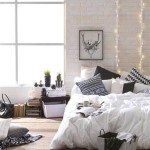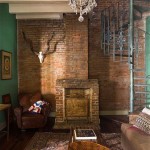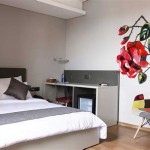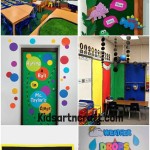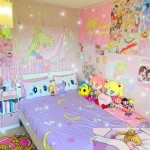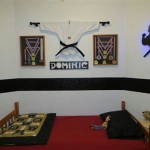How to Decorate a Drawing Room
The drawing room, often the first room guests encounter, serves as a central space for entertaining and relaxation. Its décor sets the tone for the entire home, reflecting personal style while maintaining a welcoming atmosphere. Careful planning and execution are essential for creating a drawing room that balances functionality and aesthetics.
The initial step involves establishing a clear design concept. This includes selecting a specific style, such as traditional, modern, minimalist, or eclectic, and identifying a color palette. Researching various interior design styles and browsing online resources can provide valuable inspiration. Creating a mood board with fabric swatches, paint chips, and images helps visualize the desired aesthetic.
Furniture selection plays a crucial role in defining the room's functionality and character. Consider the room's size and layout when choosing pieces. A spacious room can accommodate larger sofas, armchairs, and a coffee table, while a smaller room may require more compact furniture. Prioritize quality and comfort, ensuring that the furniture aligns with the chosen design style. Placement should facilitate conversation and movement within the room.
Wall treatments significantly impact the overall ambiance. Paint provides a versatile and cost-effective option for transforming the room's appearance. Neutral colors create a calming backdrop, while bolder hues add vibrancy and personality. Wallpaper offers a wide range of patterns and textures, allowing for greater design flexibility. Consider incorporating textured wall panels or architectural details like moldings for added visual interest.
Lighting is a critical element in setting the mood and highlighting key features within the drawing room. Layered lighting involves combining ambient, task, and accent lighting. Ambient lighting provides overall illumination, while task lighting focuses on specific areas like reading nooks. Accent lighting draws attention to artwork, architectural features, and decorative objects. A combination of ceiling fixtures, table lamps, and floor lamps can achieve a balanced and inviting lighting scheme.
Textiles introduce texture, color, and pattern to the drawing room. Curtains or drapes frame windows and control natural light, while rugs define seating areas and add warmth underfoot. Cushions and throws provide comfort and visual interest, complementing the room's color palette and design style. Choosing high-quality fabrics that are durable and easy to maintain is essential.
Accessorizing the drawing room adds personality and completes the overall design. Artwork, decorative objects, and personal mementos infuse the space with character. Mirrors can enhance natural light and create the illusion of a larger space. Plants bring life and vibrancy to the room, while bookshelves display favorite reads and add a touch of sophistication. Careful placement and grouping of accessories prevent clutter and create a cohesive look.
Window treatments play a significant role in both the aesthetics and functionality of the drawing room. They control natural light, provide privacy, and contribute to the overall design scheme. Consider the room's style and the amount of light desired when selecting window treatments. Heavy drapes create a formal and dramatic look, while lighter curtains or blinds offer a more casual and airy feel.
Flooring choices should complement the overall design and withstand regular foot traffic. Hardwood floors offer a classic and timeless appeal, while carpets provide warmth and comfort. Area rugs can define specific areas within the room and add visual interest. Consider the room's function and existing décor when selecting flooring materials.
The arrangement of furniture and accessories should promote conversation and create a welcoming atmosphere. Consider the flow of traffic and the focal points of the room when placing furniture. Creating distinct seating areas encourages interaction and allows for different activities. Balancing symmetry and asymmetry in the arrangement adds visual appeal and prevents the room from feeling too rigid.
Maintaining a clutter-free environment is crucial for creating a relaxing and inviting drawing room. Regularly decluttering and organizing surfaces and storage spaces helps maintain a sense of order. Incorporating stylish storage solutions, such as baskets, boxes, and shelving units, allows for efficient organization while contributing to the overall décor.
Personalizing the drawing room with meaningful objects and artwork reflects individual tastes and creates a unique space. Family photos, travel souvenirs, and cherished collectibles add a personal touch. Artwork should complement the room's style and color palette, while reflecting individual preferences. A thoughtfully curated collection of personal items creates a welcoming and authentic atmosphere.
Regular maintenance is essential for preserving the beauty and functionality of the drawing room. Regular cleaning of furniture, flooring, and window treatments prevents dust and dirt buildup. Periodically rearranging furniture and accessories can refresh the room's appearance and prevent visual stagnation. Addressing any necessary repairs promptly ensures the longevity of the décor and maintains the room's overall appeal.

How To Decorate My Living Room Decor For Beginners

Seven Effective Drawing Room Decoration Ideas Design Cafe

How To Decorate A Living Room 11 Designer Tips Houzz
:strip_icc()/cdn.cliqueinc.com__cache__posts__212361__-2030968-1483470364.700x0c-8571e60cad7b42a981ab29ae10b5c153-497b002f87af4747b2ab38b560e7c0fd.jpg?strip=all)
How To Decorate A Living Room 20 Ideas And Common Mistakes

How To Decorate A Small Drawing Room
Interior Designers Reveal The Mistakes You Re Making In A Living Room

30 Stylish Corner Decoration Ideas How To Decorate A

77 Best Living Room Decor Ideas 2025 Unique

How To Decorate A Living Room 11 Designer Tips Houzz

Living Room Ideas
